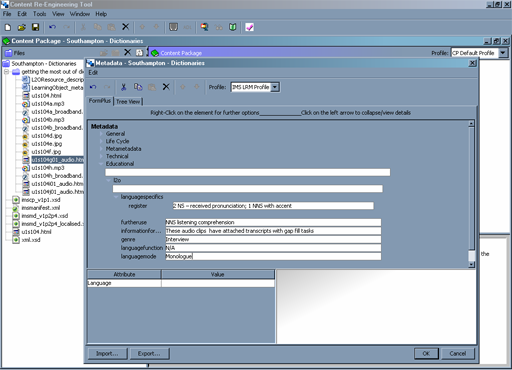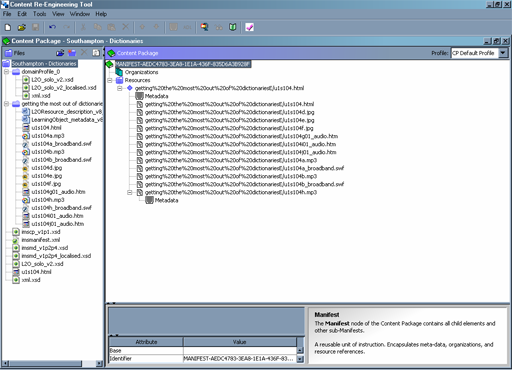L2O - Sharing Language Learning Objects
- Example walk through the technological and pedagogical 'process models'
- Resource Collection & Disaggregation
- Assets
- Content Packaged
- The resultant content package added to CLARe
- The output display for a search
Example walk through the technological and pedagogical 'process models'
The aim of this use case is to outline the process path, following both the pedagogically-led (.doc, 27kb) and technical processes (.doc, 28kb) and to explore the tools that are used to reach the final goal of depositing a learning object into a repository.
Scenario: A learning object has been sent by a hub - the two process models will be applied and the resultant content package will be deposited into Contextual Learning Activity Repository (CLARe - University of Southampton).
The package will be disaggregate and catalogued where required. It will be re-versioned / re-purposed where applicable, and the resultant learning object will be content packaged and added to the CLARe structure.
Resource Collection & Disaggregation
The original learning object consists of an html page with the following associated resources:
1 x writing task
2 x interactive tasks
3 x embedded audio files
1 x embedded audio player
3 x jpgs
Associated scaffolds include Glossary link, Dictionary link and full answers to tasks.
These can be broken down into assets and catalogued accordingly:
Assets
Learning Object |
Pedagogic Asset |
Technical Asset |
1 x writing task |
3 x embedded audio files |
1 x embedded audio player |
2 x interactive tasks |
|
3 x jpgs |
(The 3 audio files will be collectively described as collection asset due to their size.)
By referring the developer to the Asset Description Form (.doc, 56kb) the asset can be accurately catalogued and the details recorded for further application.
These details are mapped into an in house metadata schema (.xls, 51kb), which is a combination of UKLOMCORE (RLLOMAP) elements, and custom contextual elements (to reflect the teacher/learner context) that have been added into the LOM standard. The resultant metadata domain profile can also be viewed in a graphical format (.gif, 159kb)
The academic developer/teacher then identified the learning point, and re-modelled the original content reflecting the desired styling and content into a re-modelled learning object.
Now the completed learning can be catalogued ready for content packaging. The template for this is called the Learning Object Descriptor form (.doc, 50kb).
Content Packaged
Using the modified L2O metadata schema the learning object was content packaged with the CRT software.
This is a view of entering some of the metadata in CRT. Click the image to see a larger version.
This is the whole completed content package ready for export. Click the image to see a larger version.
Download the completed content package (dictionaries.zip - 5.54mb) including audio files and view the XML manifest data (which contains all the metadata for the whole resource).
The resultant content package added to CLARe
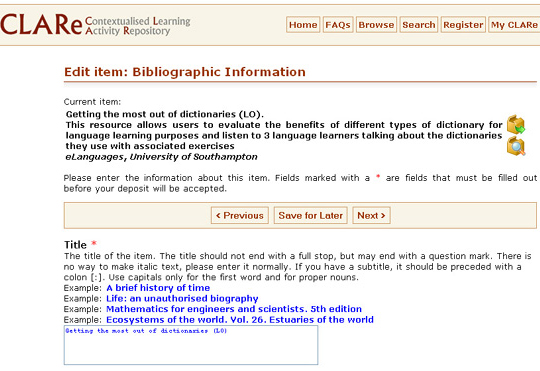
This is the first data entry screen for transferring the metadata into CLARe.
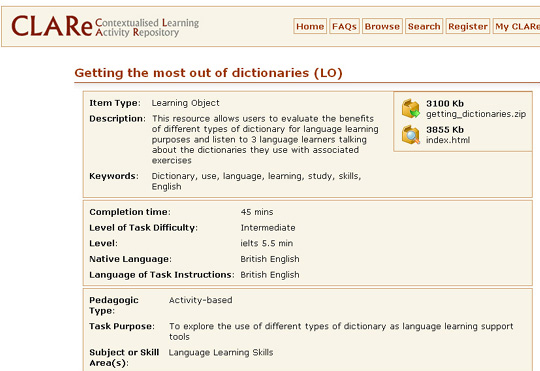
The above screen reflects the full data view of the newly added resource in the CLARe system.
The output display for a search
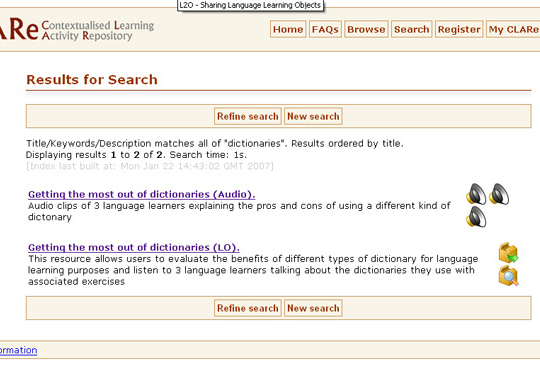
This is the resultant screen when searching for the recently added Content package.
